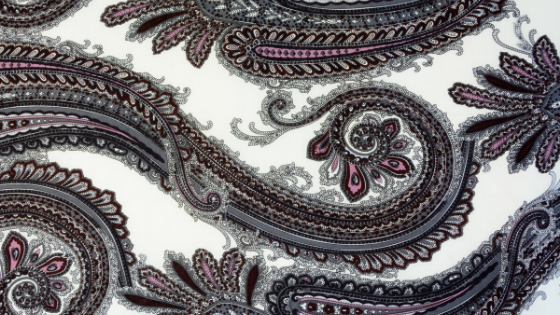
Brief History of Iconic Paisley or Ambi Design
Paisley pattern is a popular design which is known by different names in different cultures & languages and has evolved into the current form over many years. In Kashmir, a state in North India it is referred to as “Kashmir Paisley” or “Mango Motif” or “Ambi” or “Kalga” or “Kalanga”. In the Tamil language - spoken mostly in South India, it is known as "Mankolam".
The motif has its origins in Iran and India. However, its western name “Paisley” is derived from the town of Paisley in central Scotland. Though the design was not invented here it gained immense popularity in the 18th Century when this stylistic and decorative iconic motif came to the west as a result of the import of Kashmir shawls by British East India Company. The "Carrey design" (named after Urdu word for mango seed) was an instant hit. Paisley in Scotland became the epicentre of local shawl production with these motifs when demand was much more than the supply of shawls from Kashmir.
The pattern is an elongated teardrop. It resembles the growing shoot of a date palm (“the tree of life”) and is thought to symbolize fertility, reproduction, and abundance.
Ardhan Tea Light Holder - A modern adaption of ambi pattern
The pattern itself underwent a lot of transformation from its early days to the motif that we all are familiar with these days. The early motifs usually were of a single type of plant with large flowers, numerous consolidated and micro flowers, thin stems and leaves in curved shapes. With time, the designs became denser with more flowers and leaves.
It is interesting to note that the paisley motif is not limited to Kashmiri shawls in Indian textiles, it is also used in Kanchipuram saree, Buttidar Baluchari, Banarasi brocade, Tanchoi silk saree and white embroidery of Lucknow namely Chickankari embroidery, Zardozi work and Kantha embroidery.
Over the years, Paisley has continued to find its way in modern fashion and accessories market across the world. It is truly a timeless classic.
